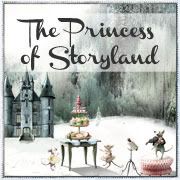About SamiK
I'm a Library Director for a small(ish) Texas town with a desire to share my love of books and the library with my community.
Currently, I am working towards my MLS (Master of Library Science) from Texas Woman's University (my alma mater!).
When I'm not treading through a pile a school work and work work, I make precious memories with both my handsome men at home. Whether we are playing with the sand between our toes, making a campfire, or just taking in a movie at home, every moment is unique.
Powered by Blogger.
Labels
- #mmblogtour (1)
- 10 q's (1)
- 2011 (1)
- 2012 (1)
- Ally Condie (2)
- Blue Bloods (1)
- Book Review (20)
- books (3)
- bulletin board (1)
- Child's Play (1)
- cinder (1)
- collection (1)
- craft (1)
- Crossed (1)
- currently reading (6)
- Dash and Lily's Book of Dares (1)
- display (1)
- dreaming anastasia (1)
- extras (1)
- flamingnet (1)
- Flat-Out Love (1)
- grad school (6)
- guest post (1)
- Halloween (1)
- house of night (1)
- hunger games (1)
- jacci turner (2)
- Jake Vander Ark (1)
- James Dashner (3)
- jay asher (1)
- Jessica Park (1)
- joy preble (2)
- julia karr (2)
- just added (2)
- Just Checked Out (1)
- lease (1)
- Lenobia's Vow (2)
- lighthouse nights (1)
- ls5603 (6)
- marissa meyer (1)
- Matched (1)
- mcnaughton (1)
- midnight in paris (1)
- new ya (1)
- Out Live Your Life (1)
- P.C. Cast (2)
- picture books (1)
- read-a-thon (1)
- resolutions (2)
- Sherry Soule (1)
- soho teen (1)
- spider (1)
- spiderweb (1)
- stephenie myer (1)
- teen tech week (1)
- texas teens read (1)
- The Accidental Siren (1)
- The Cage (1)
- the death cure (1)
- the future of us (1)
- the host (1)
- The Maze Runner (2)
- top ten tuesday (1)
- traditional literature (1)
- truth (2)
- twu (6)
- upcoming release (1)
- update (1)
- vacation reads (1)
- welcome kits (1)
- XVI (2)
- ya lease (1)
- young adult (1)
September 26, 2015
LS5603 - Genre 2 - Traditional Literature
11:37 PM | Posted by
samik
SWAMP ANGEL
1. Bibliography
Isaacs, Anne. 1994. Swamp Angel. Ill. by Paul O. Zelinski. New York: Dutton Children's Books. ISBN 0-525-45271-0
2. Plot Summary
Angelica Longrider becomes one heroic frontiers woman after completing some enormous feats. One day she meets her match in another large character, Thundering Tarnation, the ravaging bear named for his victims' cries. This original tall tale coupled with the captivating illustrations makes for an intriguing tale of heroism with a splash of humor.
3. Critical Analysis
Angelica is angel like no other. She does not have wings, a halo, or appear ethereal. Instead, she is a larger than life - literally - hero that uses her size to save the pioneers of Tennessee. Readers learn that perseverance and courage can lead to overcoming great obstacles, and they are encouraged to use their uniqueness to their advantage. Isaacs uses dialect to represent the historical elements of the time period and to make this a story worth sharing orally.
Zelinski's illustrations complement this pioneer tale. The wood grain backgrounds provide a rustic look that accentuates the frontier elements of our characters. Through the pictures, readers can find added humor in serious scenes such as throughout the fight between Angel and Tarnation. To underline the size of our heroine, Zelinski portrays her bent over or laying down as if too large to fit the frames.
4. Review Excerpts
- Reviews in Booklist, SLJ, Horn Book Guide, and Publisher's Weekly.
- "It's an American classic in the making." - Wendy Lukeheart, School Library Journal. 2010.
5. Connections
- Combine with other tall tales, having students create their own hero/heroine.
- Use to initiate discussion of courage and overcoming obstacles.
- Talk about 1800s Tennessee and pioneers.
- Pair with the Oregon Trail.
THE THREE LITTLE TAMALES
1. Bibliography
Kimmel, Eric A. 2009. The Three Little Tamales. Ill. by Valeria Docampo. New York: Marshal Cavendish Children. ISBN 978-0-7614-5519-6
2. Plot Summary
In this variant of the The Three Little Pigs, the Big Bad Wolf is hungry for some Mexican food instead of piglets. Instead of sticks, straw, and bricks, our tamales, who runaway out of fear of being eaten, settle into homes of sage, cornstalks, and cacti. This humorous rendition is expanded by Docampo's charming illustrations.
3. Critical Analysis
Sprinkled with Mexican terms and set in Texas' rich Mexican culture, readers can be sure to end the story with a deeper understanding of the culture. Another of Kimmel's favorite characters make an appearance at the the fiesta thrown by the three tamales when the Senor Lobo unsuccessfully hunts the tamales. Kimmel provides readers with a culture filled tale about working hard and overcoming fear while capturing audiences with rhythm and a caliente story.
Although Docampo used a cartoonish style to complement the fun tale, her illustrations authentically capture the Mexican culture. She uses the lines to move the story forward and add even more humor. Without the illustrations, the story would never have reached its success.
4. Review Excerpts
- Reviews in Booklist, SLJ, Horn Book Guide, and Publisher's Weekly.
- "An excellent addition to collections of fairy-tale retellings." - Shauna Yusko. Booklist. 2009.
- Volunteer State Book Award (Tennessee) nominee, 2011.
5. Connections
- Display with other Three Little Pigs (or other folktales) retellings.
- Use during Spanish Heritage Month for family/bilingual storytime.
- Have students build their own home out of household materials.
THE FIRST STRAWBERRIES: A CHEROKEE STORY
1. Bibliography
Bruchac, Joseph. Reteller. 1993. The First Strawberries: a Cherokee Story. Ill. by Anna Vojtech. New York: Dial Books for Young Readers. ISBN 0-8037-1331-2
2. Plot Summary
In this traditional Cherokee tale, readers learn about respect and friendship. When her husband comes home to find her picking flowers instead of preparing dinner, the Native American wife is hurt by his words and leaves with him following behind. As he grows increasing sorry the farther away she gets, her anger also increases. The Sun intervenes to reunite the couple in a way only nature can.
3. Critical Analysis
Bruchac does an excellent job capturing the Cherokee culture. Readers find an accurate depiction of gender roles and a look at the spiritual elements of the tribe. The simple tale teaches readers the importance of friendship and respect.Through authentic illustrations, Vojtech extends the tale into the actions of the characters and depiction of time. Although not over-the-top, the simplicity of the pictures accentuates the purity of the lesson.
4. Review Excerpts
- Reviews in Booklist, Horn Book Guide, and Publisher's Weekly.
- "The brief, readable story, accompanied by strong and spare illustrations, carries a valuable message about friendship and respect." - Horn Book Guide, 2010.
5. Connections
- Read other Native American stories written by Joseph Bruchac.
- Have students create or decorate a traditional Native American craft.
- Pair with fresh strawberries (and blackberries, blueberries, and raspberries to depict all four tries of the Sun).
- Read other stories about friendship.

Labels:
Book Review,
grad school,
ls5603,
traditional literature,
twu
|
0
comments
September 10, 2015
LS5603 - Genre 1 - Picture Books
11:19 PM | Posted by
samik
For the next few genres I may post these separately, but for the first genre, I wanted to post these together. I read each of these to my 18 month old this evening. The only book we made it through completely was Leonardo the Terrible Monster.
The Adventures of Beekle: The Unimaginary Friend
1. Bibliography
Santat, Dan. 2014. The Adventures of Beekle: The Unimaginary Friend. New York: Little Brown & Co. ISBN 978-0-316-19998-8
2. Plot Summary
Our protagonist becomes tired of waiting to be picked by is destined friend, so he sets out on the journey to meet his real world companion. He faces many obstacles only to find himself in a strange world until he catches sight of something familiar. After finding himself waiting just as before, our imaginary friends finally meets Alice and give him his name -- Beekle.
3. Critical Analysis
Beekle, like many of the readers, is curious and impatient. Santat's unique voice is seen in the imagery and illustrations that capture the importance of imagination. Readers learn about courage, friendship, and finding one's self through the brave quest that Beekle embarks on.
Santat uses the illustrations to show the contrast of the imaginary world and the real world that lacks imagination. The island of imaginary friends is vibrant, full of texture, and moves the story along. The real world is broken into two parts - adults and children. The adult real world lacks imagination, thus it is shown through neutral colors, flat surfaces, and straight lines. Once Beekle finds children using their imagination, the illustrations become colorful again.
4. Review Excerpts
- ALA Notable Books for Children - 2015
- Caldecott Medal Winner - 2015
- NYT and Booksense Bestseller
- Reviews in Booklist, SLJ, Horn Book Guide, and Publisher's Weekly.
5. Connections
- Read other stories written and/or illustrated by Dan Santat.
- Include in a friendship display.
- Have children draw their own imaginary friend after reading.
- Pair with Bedtime Stories movie screening.
Leonardo the Terrible Monster
1. Bibliography
Willems, Mo. 2005. Leonardo the Terrible Monster. New York: Hyperion Books for Children. ISBN 0-7868-5294-1
2. Plot Summary
Leonardo is not scary, and a monster must be scary. So, he sets out on a mission to find just the right person that he can scare the "tuna salad" out of. But when he succeeds, he discovers that maybe there is more important things than being scary, like being a friend.
3. Critical Analysis
This simple yet impactful tale teaches readers of all ages about friendship through its humor and engaging main character. Willems emphasizes words by highlighting them in a different color. This unique technique is less distracting and allows for a continuous flow of the story.
Leonardo and Sam are both easy to identify with. Both characters are smaller in proportion to the other characters, relating them to the audience. Much of the humor comes from the illustrations that visually complement the story. Mo Willems doesn't disappoint his fans with this guaranteed classic.
4. Review Excerpts
- ALA Notable Books for Children - 2006
- SLJ Best Books of the Year - 2005
- NYT Bestseller
- Reviews in Booklist, SLJ, Horn Book Guide, and Publisher's Weekly.
5. Connections
- Read other stories written and/or illustrated by Mo Willems.
- Highlight during National Bullying Prevention Month for display, book talk, or discussion.
- Use for storytime for themes such as monsters, friends, Halloween, etc.
- Pair with Monsters Inc movie screening.
- Personal connection: Used during summer teen outreach to local Boys & Girls Club third grade class. Discussions covered bullying, friends, self-esteem, and more. Great book for all ages and one of my favorites!
Are You My Mother?
1. Bibliography
Eastman, P.D.. 1960. Are You My Mother?. New York: Beginners' Books. ISBN 0-394-90018-9
2. Plot Summary
Baby bird hatches to find himself alone and unsure who is his mother. He leaves the nest to find her, to only find who she is not through humorous mistakes. The journey has a happy ending once he returns to find his mother waiting for him.
3. Critical Analysis
Dr. Seuss fans will find similarities in the illustrations and style of the story. From the moment Baby Bird leaves the nest, readers will relate to his longing for his mother. Although longer than most picture books, Eastman's use of dialogue moves the story along with excitement.
The illustrations date the story as they are limited to three colors --brown, red, and yellow -- and simple sketches. However, the story is made more clear by the complementing drawings.
4. Review Excerpts
- Bestsellers list
- Criticas
- Publisher's Weekly
- NYT
5. Connections
- Read other stories written and/or illustrated by P.D. Eastman or Dr. Seuss.
- Use for a Mother's Day storytime.
- Show Are You My Mother? film.
- Create and decorate a birds' nest.
- Pair with other books about featuring animals on a journey.

Labels:
Book Review,
grad school,
ls5603,
picture books,
twu
|
0
comments
Subscribe to:
Posts (Atom)
Rating System





Followers
Grab My Button







